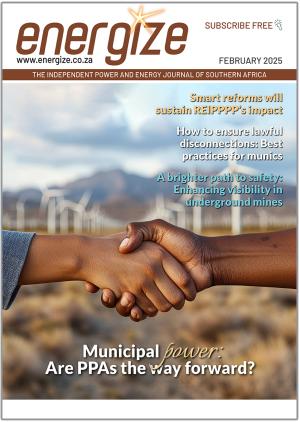A new white paper from Wärtsilä
South Africa is currently experiencing a severe power crisis with the country plunged into daily blackouts (or ‘load shedding’) largely due to a lack of new capacity coming online to replace the ageing coal fleet. As of late, announcements from the President have been made outlining a myriad of interventions to be undertaken to resolve the current crisis, many of which would support a significant growth in renewable energy onto the system.
This white paper looks at both the adequacy of South Africa’s proposed energy crisis mitigation measures and the role that gas power plays in this context along with providing a view on how gas power can support South Africa’s energy transition to 100% renewables. Taking a completely transparent and participative approach to the power system modelling, we simulated the least cost power system up to 2032 under three scenarios:
“Perfect World” where the model has no restrictions on how to optimize the system; “Planned World” where we identify eighteen announced crisis mitigation measures (and IRP additions) that are successfully executed and “Reality Check” where a view is taken on how such measures may be delayed, over-estimated, or not realised at all.

By comparing parameters including annual new-build capacity; unserved energy levels; reserve provider allocations; renewable penetration and curtailment; total system costs; and total system emissions; we can observe how far our planned mitigation measures are from the ideal world and what would happen if these measures don’t go according to plan.
The results show that our Planned World is sufficient to alleviate the energy crisis, but Reality Check will mean an exponential increase in the amount of load shedding we can anticipate.
Gas power is shown to play an important role in all three scenarios by providing dual dispatch functions we term “Flexible Peaking” and “System Contingency Reserves”. Under ideal conditions, preferably in the form of flexible gas engine power plants, provides combined energy and operational reserves which translate into capacity factors of 1 to 30% in ideal circumstances, but which increases up to 60% under system contingency scenarios.
The Perfect World, which requires the addition of 9 GW of flexible gas, 7 GW of energy storage systems, and 40 GW of combined wind and PV by 2032, enables a 26% ($26-billion) cumulative cost saving and a 17% cumulative emissions reduction when compared to the Reality Check. And when testing for a scenario where no new fossil fuel plants are built, we observe an unrealistically high battery new build requirement of at least 3 GW / 24 GWh per year; a 55% system cost premium; and a <1% emissions reductions being achieved when compared to Perfect World with new fossil fuels.
Recommendations are made, which are grounded in real life project examples, to implement distributed 100 to 400 MW engine-based power plants which will:
- Provide the much-needed power to the grid with short construction times
- Provide more localized reserve and flexibility advantages to key areas in the grid
- Enable the realization of multiple new gas energy sources in South Africa
- Allow one to address key fuel supply risks using multi-fuel technologies.
Click here to download the white paper
Contact Wayne Glossop, Wärtsilä, Phone 021 511-1230, wayne.glossop@wartsila.com , www.wartsila.com















